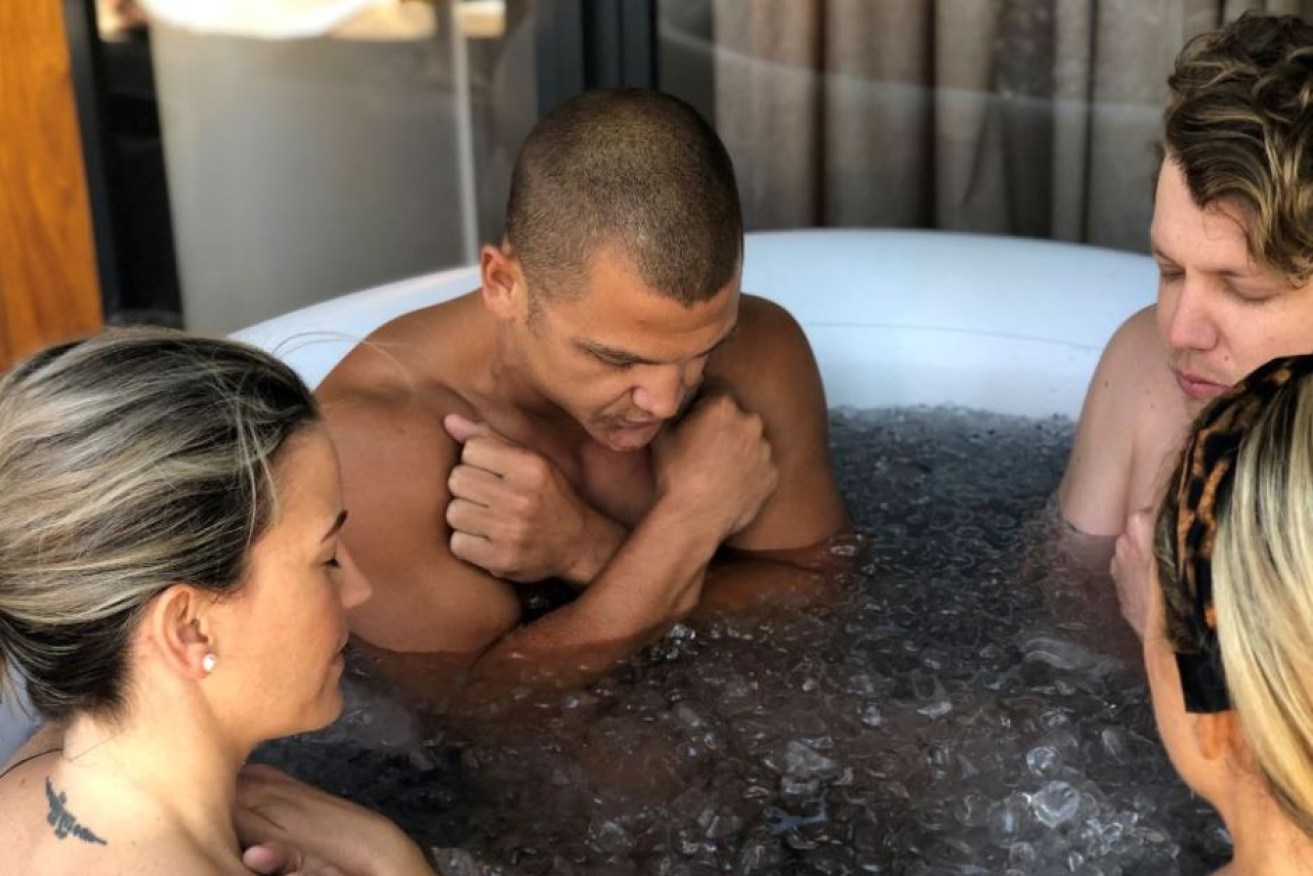Ice baths may help office workers better manage stress, but experts say the jury is still out

Business professionals close to burnout can better manage stress after taking part in ice bath breathing workshops. Photo: Brittney Kleyn
Health practitioners are using ice baths to help busy professionals manage stress.
The technique has long been used by elite athletes for recovery, but now the breathing techniques are being taught to accountants and office workers to help them manage workplace and life stresses.
Ben Murphy has developed a program teaching people to tackle the stress of an ice bath by harnessing what he calls “the conscious breath”.
“People hop in and they breathe shallow and sharp, really high up into the chest,” he said.
“What we teach people and share with people is to use the ice bath as a trigger, to hop in and breathe calmly and fully to take control of other stressful environments.”
The program mirrors a similar technique developed by Dutch athlete Wim Hof, known as the “Iceman”, who holds dozens of world records for extreme challenges in the cold.

Workshop participants are taught to control their breathing in stressful situations, such as an ice bath. Photo: Brittney Kleyn
The 60-year-old runs workshops worldwide educating people on the breathing techniques he uses to calm his body and mind.
Dr Llion Roberts from Queensland’s Griffith University has closely investigated the effects of ice baths and said the immersion can put the body in a severe state of shock.
“The breathing techniques and the breathing type of training … is really about trying to overcome and do the opposite of what the body’s trying to get them to do,” he said.
Mr Murphy said many young Australians did not realise the impact breathing had on their hormones and stress levels.
Mainly people that are close to burnout, they’re completely stressed, they’re anxious, they have fear, they have sadness,’’ Mr Murphy said.
“These are emotions that are attached to short and shallow breathing.
“We share with them tools that they can take back into their everyday life to start to manage these.”
Accountant and entrepreneur Harvee Pene uses the breathing techniques to manage the pressure of owning and operating his small business.
The father of two said it even helped him when he was blindsided by a cancer diagnosis two years ago.
“Business is around having a clear mind and making smart financial decisions,” he said.

Accountant Harvee Pene found ice baths helped him feel more in control of his life after a shock cancer diagnosis. Photo: Brittney Kleyn
“For me, the breath was a little metaphor of one thing that I can control during a really turbulent time in my life where everything seemed to be out of control.
“When I could control my breath, I realised that there were other things that I could look after, such as my water or my movement or my exercise or my relationships,” Mr Pene said.
Mr Murphy said his clients also felt a sense of achievement after conquering five minutes in the ice bath.
He said so far every client had lasted the entire timeframe.
“People feel fully alive, fully energised, immense vitality and they feel like they can basically tackle anything,” he said.
“We’re trying to get our clients to fully breathe in, fully breathe oxygen in, fully breathe life into their body so they can then manage the hormones and the stress levels.”
However, Dr Roberts said there was a lack of evidence to show ice baths were the most effective method of challenging the body’s stress response.
“There is some research out there to show that people are able to get accustomed to this stressful exposure and this challenge,” Dr Roberts said.
“Potentially there are other ways of achieving a similar outcome.”
Dr Vince Kelly from Queensland University of Technology studied fatigue and recovery in athletes and said while the research into the physical benefits of ice baths had been scrutinised, their impacts on mental and mindset training was not yet thoroughly researched.

Dr Vince Kelly says ice baths may also trigger a stress response. Photo: Brittney Kleyn
“They become difficult to sit in, it’s not very comfortable and one of the responses that you might get from that is a stress response,” he said.
While these breathing workshops fill baths with more than 100 kilograms of ice, research shows athletes should instead focus on the duration of time spent in the bath, as opposed to the temperature.
“Get a total of 10 minutes immersion in the water, so that can be one lot of 10 minutes, two lots of five minutes, it might be five lots of two minutes and then the recommendation around temperature is somewhere between 10 and 15 degrees Celsius,” Dr Kelly said.
A joint study by the University of Queensland and the Queensland University of Technology in 2015 showed that ice baths directly after strength training, could decrease an athlete’s ability to build muscle.
The research found that ice baths could dampen the natural responses of the body for athletes, if practised too regularly.








